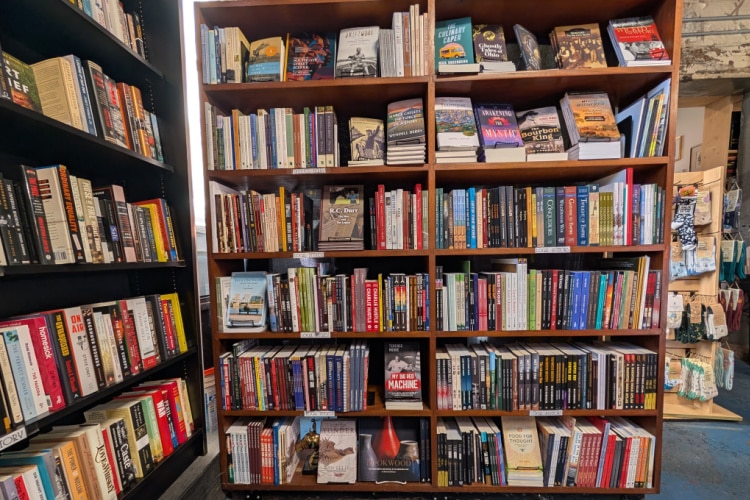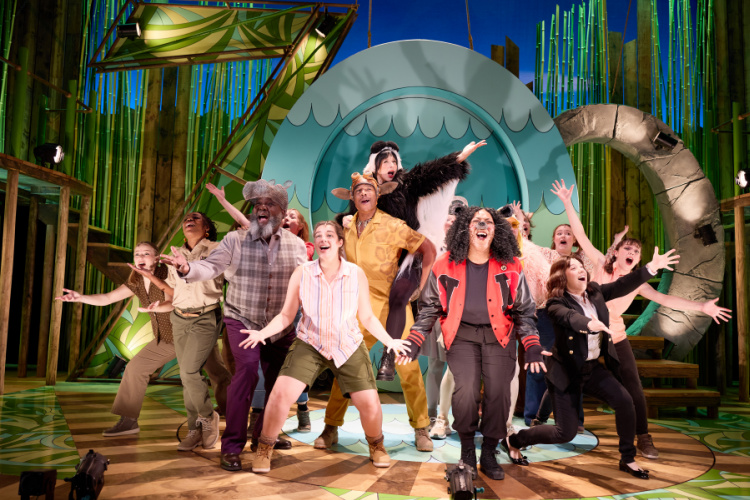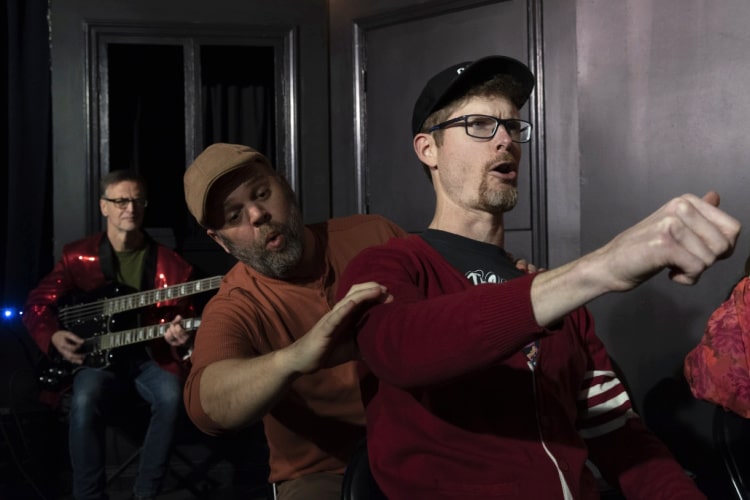The Bright Side
Nestled at the northern tip of the west end lies then relatively unknown Cincinnati neighborhood of Brighton. Quiet rows of 19th century italianate architecture might look vacant, but renters, homeowners, retailers, and artists are beginning to quietly shine a little light in the area, including The Brush Factory, a collective headed up by Rosie Kovacs that is home to clothing designers and artists.
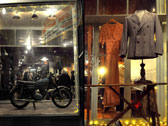
 At first blush, there seems to be more signage than actual businesses in the small neighborhood of Brighton, just north of Over-the-Rhine.
At first blush, there seems to be more signage than actual businesses in the small neighborhood of Brighton, just north of Over-the-Rhine.
Marked by a large, spherical sculpture by late resident Patricia Renick titled “30 Module Sphere No. 1,” the neighborhood is accessed off Central Parkway just south of the Harrison Street viaduct. It is just a sliver of the greater West End neighborhood, which encompasses City West, the Betts Longworth Historic District and Lincoln Court.
The Brighton neighborhood is home to factories, retail spaces, galleries, a slaughter house, community centers, meeting spaces, and a bar or two. The neighborhood is a far cry from Hyde Park and Mt. Lookout. There are no grocery stores, gas stations, trendy cafes or fancy boulevards. The early German inhabitants have moved out and in their place remain a community of mixed-incomes and diverse backgrounds. Section 8 housing sits near factories adjacent to historic Italianate mansions.
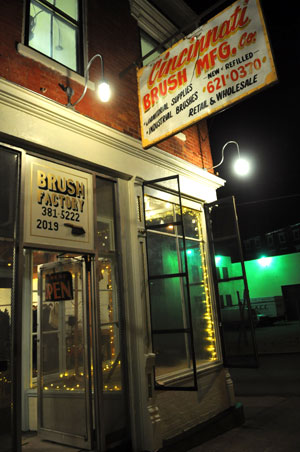 Driving through, it may be difficult for an outsider to determine which buildings are vacant and which are inhabited. The streets are quiet most of the time, especially in the winter. A deeper look, however, shows a growing community. Vacant buildings are being renovated and people of all stripes are choosing to move into the neighborhood.
Driving through, it may be difficult for an outsider to determine which buildings are vacant and which are inhabited. The streets are quiet most of the time, especially in the winter. A deeper look, however, shows a growing community. Vacant buildings are being renovated and people of all stripes are choosing to move into the neighborhood.
“Most people are artists or musicians and that’s made it a hip little spot,” says long-time landlord & Brighton property owner, Fred Lane.
“The Brighton area was a forgotten area for a long time. But there are a lot of creative people living here now.” In Lane’s opinion, this surge of popularity the neighborhood is currently receiving is “an opportunity for people to do something” in and for the local community.
Down Central Avenue, Brighton’s main street, there is a unique addition to the neighborhood. The Brush Factory, a boutique featuring edgy women’s wear and unusual jewelry by 11 local designers, opened its doors this past December. Rosie Kovacs, the boutique’s proprietor, has lived and worked in New York City and San Francisco, but decided that Cincinnati was her home. A Brighton resident herself, she said she is determined to showcase what the city has to offer.
“I want people to have an excuse to venture into new neighborhoods and see the little gems that make up Cincinnati,” says Kovacs. “I hope The Brush Factory will be the stepping stone for other small business and patrons to have an interest in the area.”
 Lane, Kovacs landlord, was noted as a motivating force behind her decision to start the boutique. A hard-wrought realist, Lane hopes to give Kovacs resources to realize her potential.
Lane, Kovacs landlord, was noted as a motivating force behind her decision to start the boutique. A hard-wrought realist, Lane hopes to give Kovacs resources to realize her potential.
“I really give credit to a young person that jumps out of the box and tries something. Whether it makes it or not, it would be a really good experience,” says Lane.
Kovacs said she chose the Brighton neighborhood because of the unique space. The industrial character of the building, used for more than a hundred years to manufacture brushes, inspired her. The building remains largely the same as it did when it was a factory. Original wood floors were refinished and shelving remains as it was over a century ago.
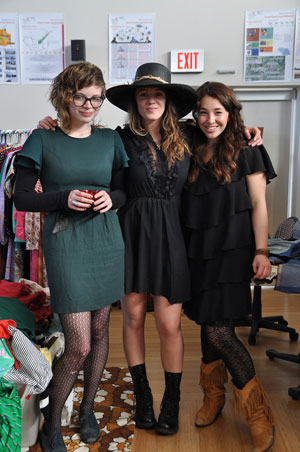 Kovacs hopes to foster community atmosphere amoung the boutique’s designers, which compasses her commitment to the “open source” movement. This term, generally applied to computer software developed to be distributed free of charge, was applied to art and design in David Reinfurt’s Citizen Designer, a book that has greatly influenced her. The idea is that artist work together and people are fueled by each other’s creativity.
Kovacs hopes to foster community atmosphere amoung the boutique’s designers, which compasses her commitment to the “open source” movement. This term, generally applied to computer software developed to be distributed free of charge, was applied to art and design in David Reinfurt’s Citizen Designer, a book that has greatly influenced her. The idea is that artist work together and people are fueled by each other’s creativity.
Kovacs has a history of inciting creativity in the community. She organized GRASS in the spring of 2009, a collaborative effort to bring together community artists. She was also involved in Young Women for Success, a partnership between UC and Walnut Hills for students interested in fashion.
And so it is in Brighton. Just down the street from the boutique sits several galleries. On the first Saturday of the month, gallery openings set Central Avenue abuzz with foot traffic from all over Cincinnati, thanks to the creative people who have channeled their energy into developing this area for the sole purpose of artistic expression. Fiscal accessibility of space has a lot to do with the area’s current cultural renaissance.
“Like many arts districts, one reason we live and work and mount exhibitions in Brighton is because it is a low-cost living, far cheaper (in our experience) than equivalent spaces in Over-the-Rhine proper or Northside,” says Matt Morris of U-Turn Art Space. “The galleries in Brighton have the advantage of total creative license because they don’t function as anyone’s primary source of income and are therefore not restricted by market or commerce.”
Brighton has seen an influx of creative types for decades. Poets, pianists, sculptors and welders, DJs, performance artists, bands, a moped club, fashion designers and art educators all currently call Brighton home, according to Morris. That may have a lot to do with the 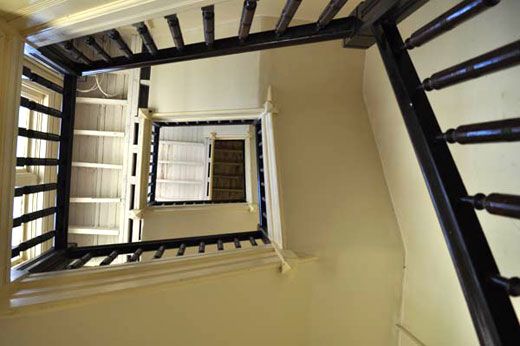 fact that artists will live and work in tougher areas for cheap rent. The spaces are raw and allow for inspired interpretation – perfect for galleries. Semantics, U-Turn Art Space, Synthetica Gallery and the drive-by gallery for the Freeman Central Gallery now line Central Avenue thanks to the abundance of affordable spaces. While those spaces reside at the street level, above them are similarly-affordable apartments and artists studios.
fact that artists will live and work in tougher areas for cheap rent. The spaces are raw and allow for inspired interpretation – perfect for galleries. Semantics, U-Turn Art Space, Synthetica Gallery and the drive-by gallery for the Freeman Central Gallery now line Central Avenue thanks to the abundance of affordable spaces. While those spaces reside at the street level, above them are similarly-affordable apartments and artists studios.
“Brighton is a secluded outpost for the arts. It is an inner-city, industrial neighborhood that is filled with living spaces and studios for artists of all kinds,” says Morris.
This embodies the very essence of the humble neighborhood. It isn’t just a collection of buildings and businesses or people and proprietors, but a community tied together with a common thread: a desire to uplift the area by engaging and exploiting the bevy of creative resources found in Brighton in order to get it done.
Photography by Scott Beseler
The Brush Factory window displays
Factory facade
Rosie Kovacs, opening night
Grass: Linda Lucas, Rosie Kovacs, Genevieve Rainsberger
Semantics, up

